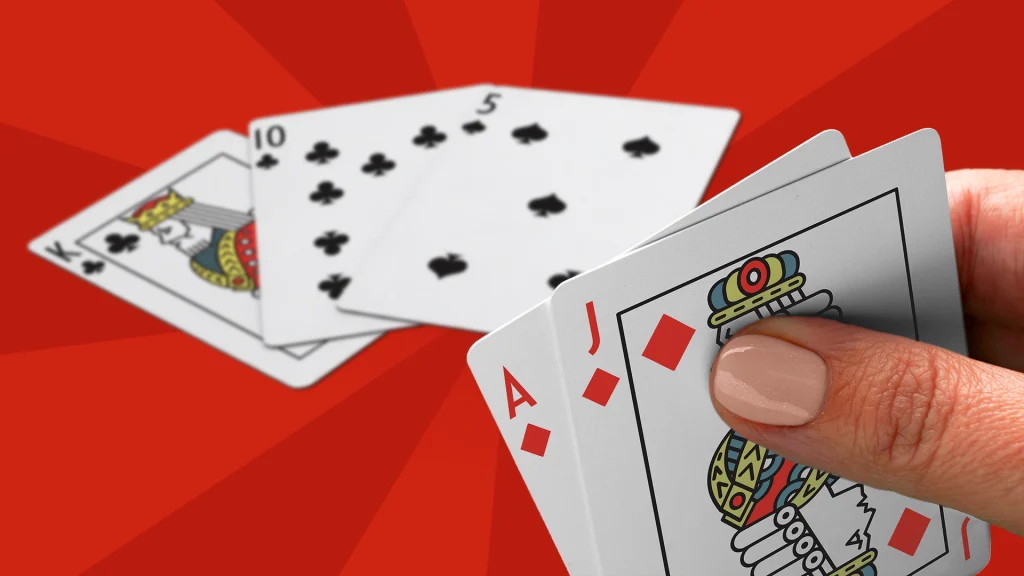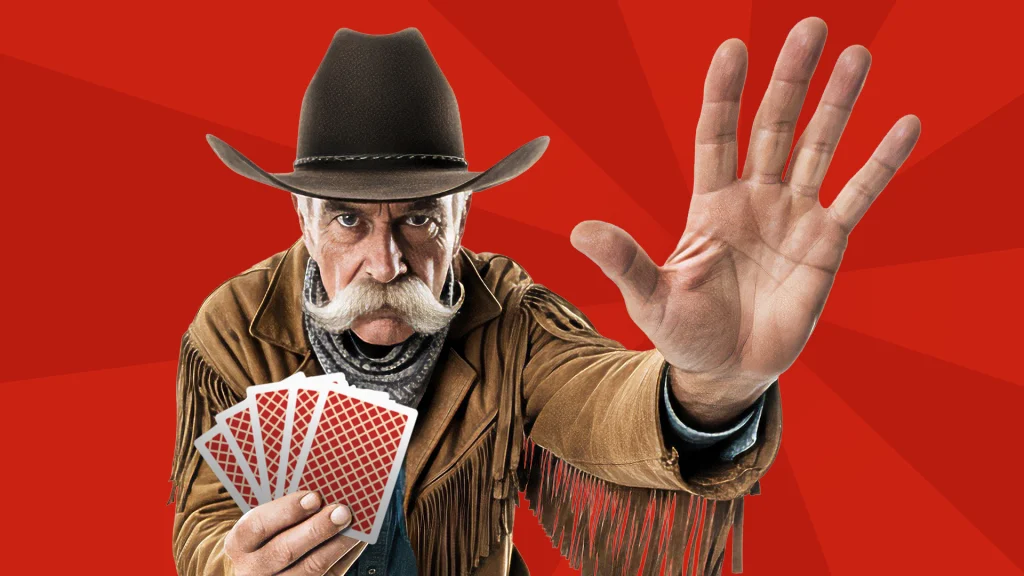Inside Straight Draw in Poker: Risky Move or Rookie Mistake?
No phrase in poker has a more shady rep than “drawing to an inside straight.” And hey, most of the time, it deserves it.
But what is an inside straight in poker, really, and why does it have a reputation similar to the Tinder Swindler? This quirky little draw lures you in with the promise of a straight, then ghosts you about 91.5% of the time.
Whether you’re chasing it on the flop or turn, we’ll help you understand what an inside straight means and why it’s not always worth the chase, covering odds, examples, and strategy.
Are you with us? Let’s gut this topic inside out.
What is an inside straight in poker?
An inside straight in poker is when you’re four cards into a five-card straight, but the card you need to complete it is smack dab in the middle. You don’t need a card at either end; you need the one hiding in between.
So if you’re holding 5-6-8-9, you’re hoping for a 7 on the next card. That’s the “inside” part. You have a shot at a straight, but it’s a narrow one. Only four cards in the entire deck can save you.
Inside Straight Example

Let’s say you’re playing Texas Hold’em, and you have A♦️J♦️ in one hand. The flop comes K♣️T♣️5♠️. Now your eyes light up.
A queen, and only a queen, would give you a straight: T-J-Q-K-A.
That’s a textbook inside straight draw. There are four queens left in the deck, which means you have four outs. That’s poker speak for “not great odds,” and we cover that term in the next section.
An inside straight is not impossible, but it’s not the slam dunk it initially seems, either.
If you want to know what is a slam dunk, deposit with crypto at Cafe Casino. You bypass the red tape from your bank, your deposit is guaranteed to go through, and – this is the best part – your crypto withdrawals have the highest available limits. You can usually take your jackpot out in one fell swoop – and that’s the insider straight truth!
Outs
“Outs” are the number of cards left in the deck that can improve your hand. If you’re drawing to a flush, straight, or full house, those cards that help you get there are your outs. With an inside straight draw, you have four outs, aka only four cards in the entire deck can fill the gap. The more outs you have, the better your odds of hitting your draw.
Difference Between Inside and Outside Straight
Both inside and outside straight draws need one card to complete a five-card sequence, but they’re not the same. One is Fyre Festival, and the other is Coachella.
An inside straight (gutshot) requires a card in the middle to complete the sequence, such as a 7 in 5-6-8-9. An outside straight (or open-ender) can hit from either side, like a 5 or 10, completing 6-7-8-9.
That simple shift gives open-ended straights eight outs instead of four, which is double your chances. You have four 5s and four 10s in the deck, equalling eight options, vs. only four 7s.
What does it mean to never draw to an inside straight?

“Never draw to an inside straight” means you shouldn’t risk your chips chasing a hand that’s unlikely to hit.
It’s one of the oldest pieces of poker advice around. Old West cowboys advised it to wide-eyed city slickers in saloons with whiskey tumblers in their hands.
Why You Should Never Draw To and Inside Straight
But the question is, why? You’re so dang close to a straight, it’s just one card!
That’s true, but it’s mostly wishful thinking that you’ll actually pull that card. The problem is the odds don’t back you up, and the reward usually isn’t worth the risk.
Most of the time, you’re overpaying to chase a long shot. Unless you’re getting perfect pot odds or have additional ways to win, fold it.
Lower Probabilities Of Hitting
With only four outs, there are just four cards in the entire deck that can complete your hand, and the odds aren’t great.
With one card to come, you’ll hit it about 8.5% of the time. Even with two cards to come, it’s only around 16.5%.
Compare that to flush or open-ended straight draws, which have nine and eight outs, respectively, and it’s clear the inside straight is one of the weakest drawing hands in poker. It might hit now and then, but you’ll miss far more often than you’ll connect.
Cost Vs. Reward
Chasing an inside straight means putting chips into the pot for a hand that rarely improves. If your opponent is betting big, the amount you need to call can get expensive quickly.
Unless the pot is massive or you’re guaranteed great odds, the math doesn’t add up. You’re risking too much for too little. Worse, even if your hand completes, there’s no guarantee you’ll win the pot. It might not be the best hand at showdown. All in all, you’re usually better off saving your chips for a more reliable spot.
Better Options
There’s almost always a smarter play than chasing a gutshot. If you’re holding overcards, have position, or are drawing to an open-ended straight or flush, those are stronger paths to take.
Even folding can be the best move when your draw is weak and the price is steep. Good players win by making the most of their chances, not by taking long shots just because the hand looks close.
When you pass on inside straight draws, you make room for more profitable plays.
Speaking of passing. Try passing your unique Cafe Casino referral link to a friend. When they sign up and make a successful deposit, you have 100% odds of receiving a cash referral bonus in return.
Inside Straight Odds in Texas Hold’em
The odds of completing an inside straight poker hand in Texas Hold’em depend on how many cards you still have to see.
After the flop, if you’re hoping to hit your gutshot on either the turn or the river, your chances are around 16.5%, which translates to one in 6.1 times.
If you’re on the turn and looking to catch on the river, it drops to about 8.5%, or one in 11.8 times.
By comparison, an open-ended straight draw has eight outs and hits about 31.5% from flop to river, which is nearly double the odds. A flush draw is even stronger at 35%.[2]
Given those numbers, drawing to a poker inside straight hand is rarely the smart play unless you’re getting amazing pot odds or have backup draws that improve your equity.
Inside straight draws may look tempting, but the odds and risk rarely line up. Save your chips for smarter spots, or at least know when the gamble’s worth it. And if you’re in the mood to test your instincts without the table pressure, try your luck on video poker at Cafe Casino.